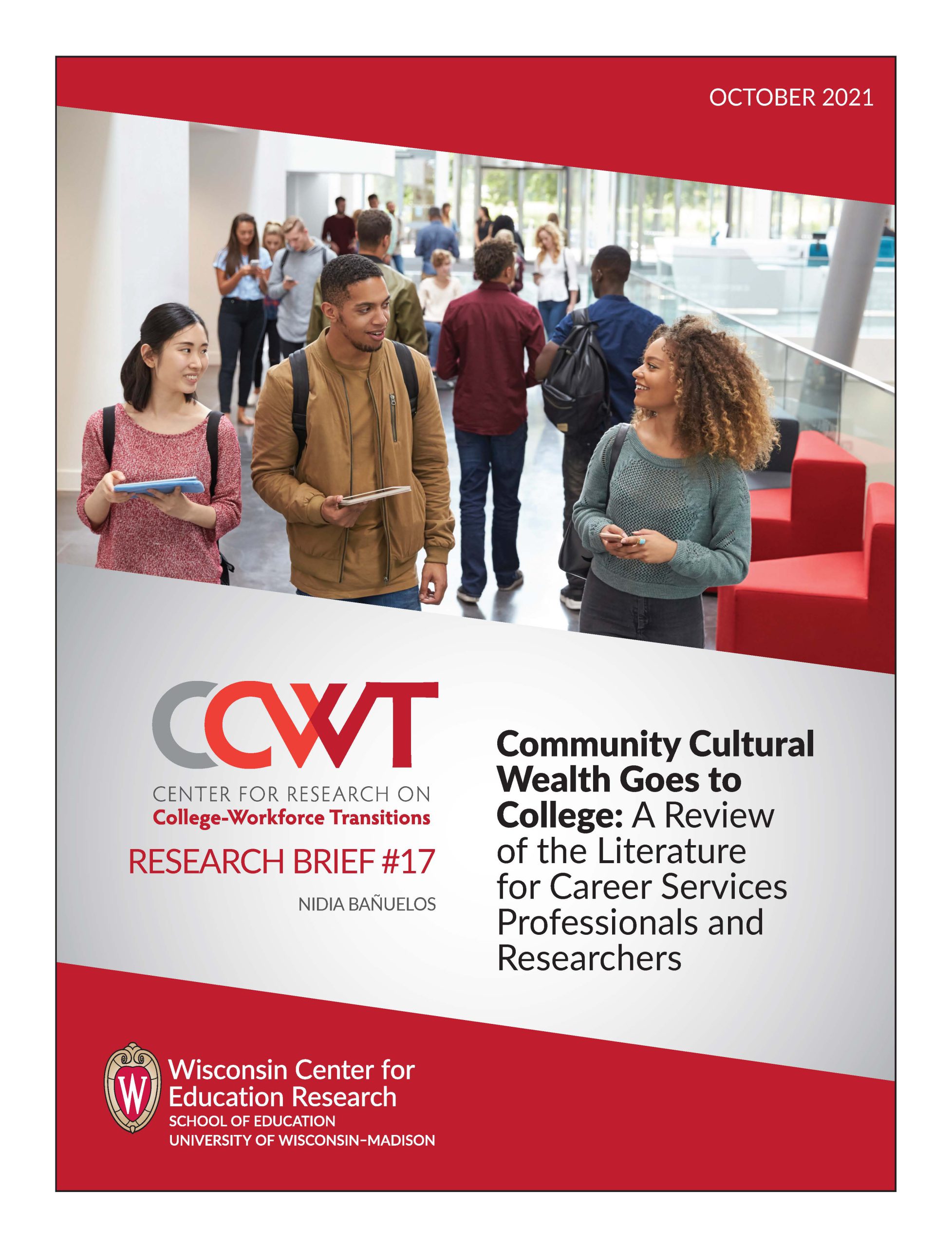Imagine a community buzzing with life, a tapestry woven from diverse experiences, knowledge, and skills. This vibrant tapestry, which represents the collective wisdom and assets of a community, is what Yosso calls “community cultural wealth.” This concept, developed by Tara Yosso, a renowned scholar, challenges traditional definitions of capital and recognizes the rich cultural resources that exist within marginalized communities.

Image: ccwt.wisc.edu
Growing up in a predominantly Latinx community, I witnessed firsthand the power of community cultural wealth. From the wisdom passed down by elders to the vibrant art and music that filled our lives, our community thrived on a shared history, language, and customs. This invisible resource, often unrecognized by mainstream institutions, was the foundation of our collective resilience and progress.
Understanding Yosso’s Community Cultural Wealth
Yosso’s community cultural wealth framework expands the traditional notion of capital, which often focuses on economic resources and formal education. It instead centers on the assets and resources that exist within communities and individuals, reflecting their cultures, histories, and lived experiences.
This framework emphasizes six distinct forms of capital:
- Navigational Capital: The ability to move through and navigate social systems – often informal – that individuals and communities use to survive and thrive.
- Linguistic Capital: The fluency and proficiency in different languages, dialects, codes, and communication styles that individuals and communities possess.
- Familial Capital: The strength of family networks and the support they provide.
- Social Capital: The bonds of trust, reciprocity, and social networks among individuals and communities.
- Aspirational Capital: The hopes, dreams, and aspirations for the future that individuals and communities hold.
- Resistant Capital: The ability to cope with and overcome oppression and adversity, drawing strength from shared experiences and cultural practices.
Recognizing the Value of Community Cultural Wealth
Understanding Yosso’s framework allows us to see communities through a new lens, recognizing the inherent value of their cultural assets. It highlights the strength and resilience of marginalized communities, often overlooked in mainstream discussions about success and achievement.
For example, a community might have a long history of informal education practices, passed down through generations. This can be seen as “navigational capital,” enabling individuals to thrive even in the absence of formal schooling. Similarly, the use of culturally relevant language and communication styles can be understood as “linguistic capital,” reflecting the rich linguistic diversity within the community.
By recognizing the power of these forms of capital, we can develop more equitable and inclusive practices in education, healthcare, and other sectors. This means creating spaces where individuals feel valued and empowered, allowing them to leverage their unique skills and experiences to achieve their full potential.
Leveraging Community Cultural Wealth for Equity and Social Change
Recognizing and leveraging community cultural wealth has become increasingly crucial in addressing issues of equity and social justice. This involves shifting perspectives and embracing a more inclusive approach to policymaking, service delivery, and community development.
For example, schools can integrate culturally relevant pedagogy, incorporating language, art forms, and community knowledge in their curriculum. This approach can enhance student engagement, promote a sense of belonging, and create equitable learning environments.
Similarly, healthcare providers can benefit from understanding the unique experiences and cultural practices of patients, leading to more culturally sensitive and effective care. This requires recognizing the “resistant capital” individuals possess, acknowledging their ability to cope with and overcome challenges, and building trust and rapport.

Image: helpfulprofessor.com
Tips for Leveraging Community Cultural Wealth
If you’re interested in leveraging community cultural wealth, here are some practical tips:
- Listen and Learn: Engage with community members and understand their experiences, perspectives, and cultural practices.
- Embrace Diversity: Value the diversity of languages, cultural traditions, and perspectives present in the community.
- Support Community-Led Initiatives: Encourage community members to lead and participate in programs that reflect their needs and interests.
- Promote Intergenerational Learning: Create opportunities for young people to learn from elders and build upon the collective wisdom of the community.
- Challenge Traditional Norms: Question assumptions and challenge systems that perpetuate inequity and marginalization.
By embracing these tips and actively incorporating cultural wealth into our work, we can create more inclusive and equitable communities where everyone has the opportunity to thrive.
FAQ
What are some examples of navigational capital in a community?
Navigational capital can manifest in various ways. For example, in a community with a long history of migration, individuals might possess skills in navigating different social systems and institutions. They might know how to access resources, services, and support networks, even if these are not formally recognized. This knowledge and expertise can be invaluable for individuals and the community as a whole.
How can I contribute to building linguistic capital in my community?
You can contribute to linguistic capital by supporting the use of diverse languages and communication styles. This can include promoting bilingual education, creating multilingual resources, and celebrating the richness of different languages and dialects. It also means embracing the use of informal language and communication styles that are common within the community.
What is the significance of recognizing aspiring capital?
Aspirational capital highlights the hopes and dreams that individuals and communities hold for the future. Recognizing this capital involves valuing aspirations, providing support for individuals to achieve their goals, and creating opportunities for them to envision a brighter future. It’s crucial for empowering individuals and communities to strive for positive change.
Yosso’S Community Cultural Wealth
Conclusion
Understanding and leveraging Yosso’s community cultural wealth is essential for building equitable and just societies. By recognizing the inherent value of cultural practices, lived experiences, and community assets, we can create spaces where individuals and communities are celebrated and empowered.
Are you interested in learning more about community cultural wealth and how to leverage its power in your community? Share your thoughts in the comments below!





